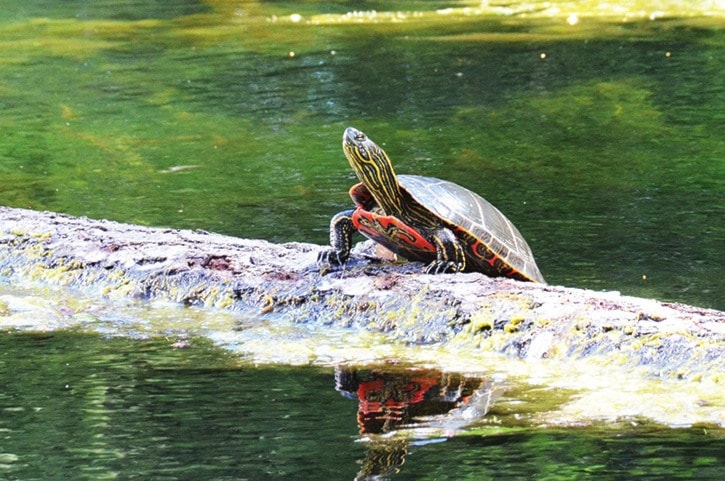Retaining walls built to hold back Langford Lake could be hurting the long-term survival of the endangered western painted turtle.
That’s the finding of a 90-page report conducted by four Royal Roads University environmental sciences students, who spent almost a year studying the population of the turtles in and around the Langford Lake systems.
The group’s research was presented to Langford’s Parks, Recreation, Culture and Beautification Standing Committee on Aug. 24.
The group found that retaining walls built by many Langford Lake residents disrupt the natural shoreline and make it hard for the turtles to find appropriate nesting areas.
The students suggest that Langford could offer incentives that encourage homeowners to remove retaining walls.
However, the issue could be tough to swallow for some waterfront residents who say retaining walls are needed to prevent loss of property.
Morry Stearns, a citizen representative appointed to the committee, moved to the lake front 17 years ago. He didn’t have a retaining wall and was losing about a foot of his backyard to the lake every year. His solution was to build a sandy beach near the lakeshore and have a wall set a ways back so it did not obstruct the shoreline.
His neighbours on either side have built large retaining walls and their yards are now three to four feet higher than the lake. Residents were only doing what they felt was the right thing at that time, he said. To now try and tear down those walls would put them in a very difficult position as they would likely end up losing property to the advancing lake.
“All you can do is try to prevent more (walls from being built) in the future,” Stearns said.
A compromise solution suggested by the group is to encourage partial walls, that still allow turtles to access land, or using alternatives to walls such as native vegetation that acts as a natural ground stabilizer.
But the fate of those recommendations is still unknown. Members of the city’s planning department may choose to do their own report with some or all of the recommendations and present them to council at a future meeting. No decisions have been made as of yet.
katie@goldstreamgazette.com
